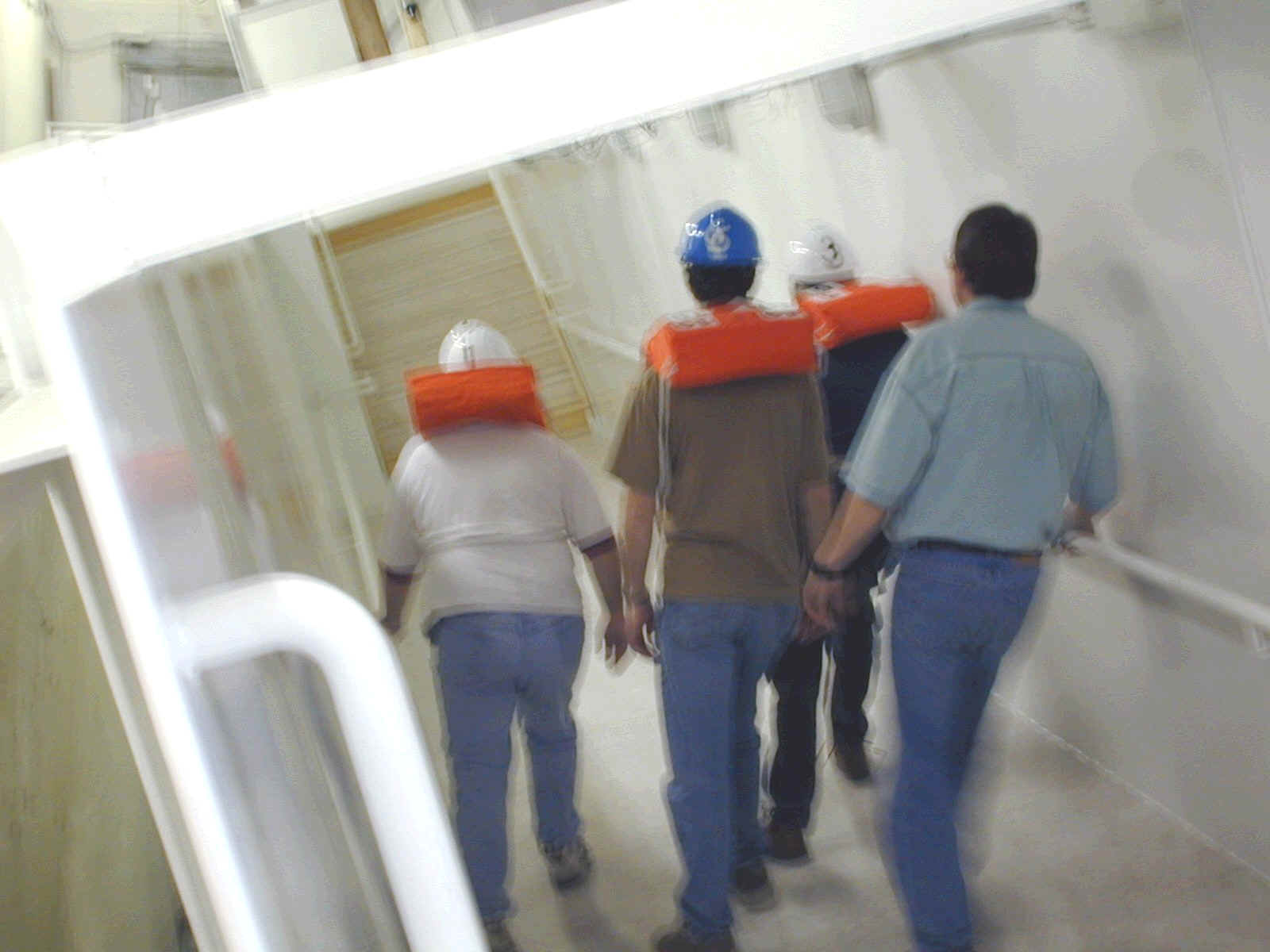MEASURING HUMAN PERFORMANCE IN SHIP EVACUATION CONDITIONS OF STATIC HEEL.
In support of the development of the most advanced marine evacuation model maritimeEXODUS, a facility is being constructed at the laboratories of Fleet Technology Limited, Kanata Ontario, Canada on which data on human movement and behaviour in a ship will be collected. A fundamental part of the development of marine evacuation models is the acquisition of data for persons moving in typical ship’s compartments, passageways, stairways, etc, at level and at heeled angles and under a variety of potential hazards.
The rig that is under construction comprises a “cabin”, leading to a 10m passageway ending in a stairway. The whole facility can be heeled at angles up to 30o via hydraulic rams. The rise angle of the stairs can also be adjusted, and provision is made for installing a variety of doors in the passageway. The facility will be outfitted with cameras and movement sensors/timers.
A full cross section of the population will be passed through the facility this summer, with all tests under the strict control of human factors specialists. Data will be anlaysed and used in the development of maritimeEXODUS. The development work also includes the extension of the EXODUSprogram to include the abandonment phase of the ship evacuaiton. This includes such items as the loading and lowering of lifeboats, use of slides, etc.
|
|
A view of the SHEBA test rig |
Passengers in lifejackets attempting to pass through tilted corridor |
Another image of the simulator showing a different view with cross section may be down loaded here.
As of June 26 2001, the SHEBA facility was made fully operational. The experiments are being run by a team comprising of staff from Fleet Technology and FSEG.
|
|
SHEBA Team |
SHEBA Facility |
The experiments are monitored and controlled from a central control station. Here the angle of the rig is set and the progress of the participants monitored through five video cameras and five electronic eyes used to automatically determine travel speed in the corridor and on the stairs.
|
|
SHEBA Control Station |
Ian Glen of Fleet Technology at the control station communicating with other team members |
Unlike other ship based simulators which incorporate short and narrow test sections, the SHEBA test facility incorporates a large test section. Short test sections do not allow passengers to attain representative travel speeds due to the need to accelerate and decelerate at the start and end of the journey. Furthermore, small test sections do not allow crowd based analysis to be undertaken. The large scale SHEBA facility overcomes these limitations and allows the measurement of individual passenger capabilities in representative test sections as well as the behaviour of groups of passengers. The facility comprises a 7m by 4m "cabin" attached to which is a 10m by 2m passageway at the end of which is a stairway. The steel structure reproduces a ship’s corridor and stair, with handrails (removable) and facilities to insert a doorway with sill, etc.
|
|
| Picture 1 | Picture 2 |
|
|
| Picture 3 | Picture 4 |
Second picture: Group of uni-directional passengers at shallow angle of list.
Third picture: Group of unidirectional passengers descending staircase at high angle of list.
Forth picture: Group of passengers in contra-flow situation
Test subjects enter the assembly "cabin" while the facility is level and the facility is tilted to the test angle only after all "passengers" are in and have secured themselves. Test subjects pass through the passageway and the stairs, individually and in groups. Contra flow situations are also investigated. The passengers behaviour is recorded on video and their movement is timed along the passageway and up/down the stairs. Passengers exit on a fixed platform at the top of the stairs, designed to ensure that passengers clear the test area quickly and do not influence those passengers still in the test area. Tests can be conducted in both directions.
The work that is being pursued by FTL and
FSEG is being funded by the Canadian Transportation Develpoment Centre, Montreal, and
additional funding is being put into the facility by FTL via a research and development
award from its parent company BMT.
For more information about EXODUS visit the EXODUS Web Pages. For a complete listing of EXODUS publications visit the FSEG Publications pages.







